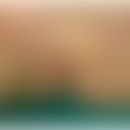Synonym(s)
HistoryThis section has been translated automatically.
Combleet 1951
DefinitionThis section has been translated automatically.
The transversal nasal line represents a rarely noticed, but on close observation not so rarely occurring malformation of skin and nasal cartilage with possible origin in the early history of development.
You might also be interested in
Occurrence/EpidemiologyThis section has been translated automatically.
Women are preferentially affected (w:m= 8:2)
EtiopathogenesisThis section has been translated automatically.
The formation of the transverse nasal line is attributed to the different rates of growth of the lateral triangular cartilages and the nasal wing cartilages in childhood and puberty.
ManifestationThis section has been translated automatically.
Although congenital, the transversal nasal nasal line is only noticed and diagnosed at a later age (15-45 years) (Sathyanarayana BD et al. 2012).
ClinicThis section has been translated automatically.
Usually a transversal line or furrow at the transition of the 2 proximal thirds to the distal third, usually skin-coloured, but sometimes reddish tinged or flatly deepened since birth. In this area there is often the additional occurrence of milia, cysts or comedones. A conspicuously transversely oriented band with milia and comedones is in individual cases considered a minus variant of this nasal malformation even without furrow formation (Waller B et al. 2012).
Note(s)This section has been translated automatically.
In terms of differential diagnosis, the "transverse nasal line" must be delimited from an artificially induced transverse fold, which can form in patients with allergic rhinitis as a result of constant upward rubbing of the nose (allergic greeting).
LiteratureThis section has been translated automatically.
- Pavithran K (1989) A Survey for Transverse Nasal Groove. Indian J Dermatol Venereol Leprol 55:105-107.
- Sathyanarayana BD et al (2012) Appraisal of transverse nasal groove: a study. Indian J Dermatol Venereol Leprol 78:439-442.
- Waller B et al (2012) Transverse nasal crease and transverse nasal milia: clinical variants of the same entity. Arch Dermatol 148:1037-1039.
Disclaimer
Please ask your physician for a reliable diagnosis. This website is only meant as a reference.




